How to choose a leaf blower and vacuum? |
||||
 |
There are various points to consider before you decide which machine to buy. Most importantly, would a leaf blower or a combined blower vacuum be more suitable for your needs? Read our Best Leaf Blower Review to see our number one reccomendation! | |||
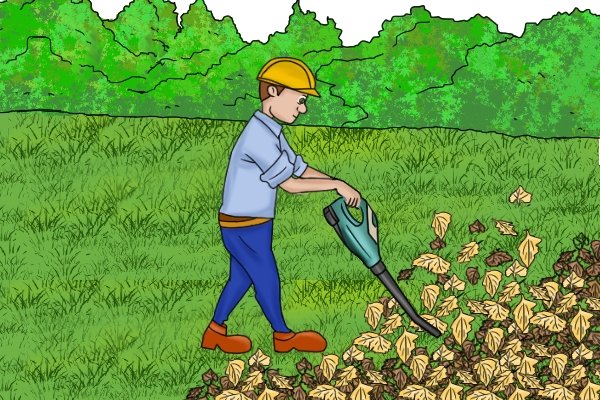 |
Leaf blowers are popular because they’re nearly all smaller and lighter than blower vacuums, won’t clog up, are simple to operate and contain fewer moving parts that can fail.
If you have a large amount of leaves to shift, it’s probably quicker to blow them into a large pile (preferably on a tarpaulin for easy removal) and finish off with a lawn rake, rather than use a vacuum. |
|||
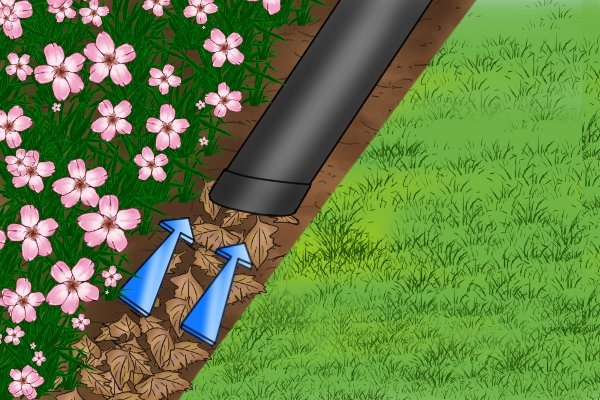 |
On the other hand, blower vacuums are more versatile and can be used to suck up leaves from tight spaces where a rake won’t reach, as well as from around delicate plants which would be damaged by a leaf blower.
Many gardeners also find the mulching facility very convenient as it greatly reduces the amount of debris. |
|||
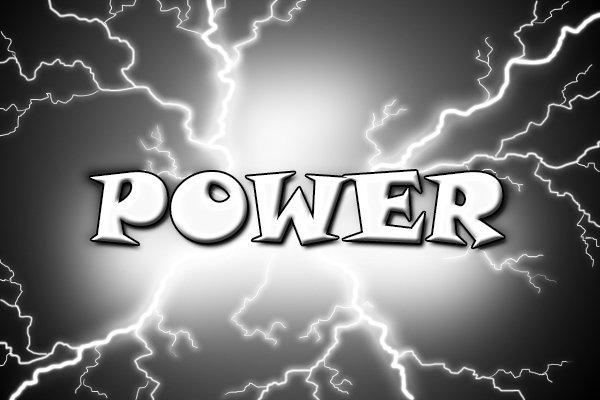 |
Having made your choice between leaf blower and vacuum, you need to decide on the power source. This can be:
|
|||
Electric (corded) |
||||
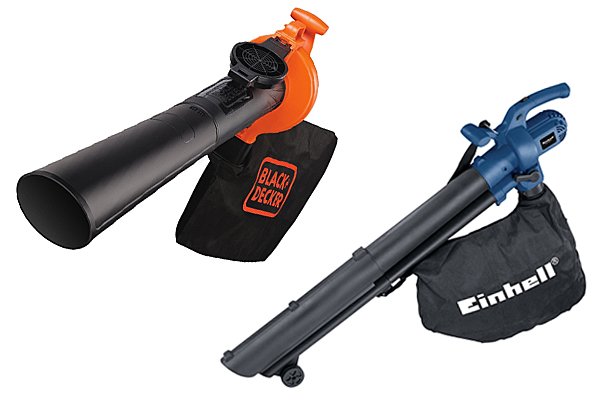 |
This is the most popular choice among householders. Both corded leaf blowers and blower vacuums have the advantage of being cheaper, quieter and lighter than petrol-driven versions, and are simple to operate – you just plug them in and switch on.
The wattage figure will tell you how much electrical power the machine has, with most blowers producing between 2,200 and 3,000 watts. |
|||
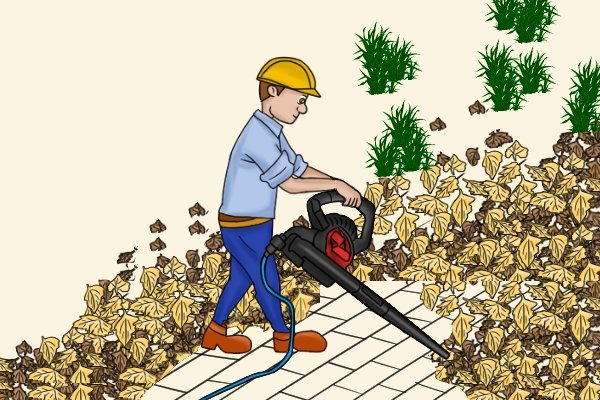 |
The only drawback is the power cable. Some people find it a bit restrictive, others think it’s a small price to pay for the ease and convenience that these blowers offer.
Extension leads up to 50m (164ft approx) are available, but should be used with care as they can flatten flowerbeds if pulled in the wrong direction. |
|||
Electric (cordless) |
||||
 |
Cordless blowers and vacuums are extremely convenient to use. Their batteries make them heavier than corded models but offer the freedom of petrol-driven versions with far less noise.
However, they are less powerful than either of the alternatives and will only run for up to around twenty minutes – or less, if on high power. Recharging can take anywhere between forty-five minutes and two hours. |
|||
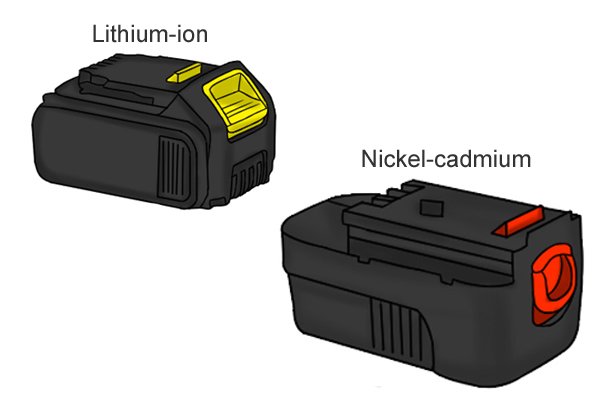 |
The batteries are usually made either of nickel cadmium (also called NiCd), or lithium-ion, also known as Li-ion.
Li-ion batteries cost more but are smaller and lighter than NiCd batteries of the same voltage, and will retain their charge for much longer between uses – up to several months. |
|||
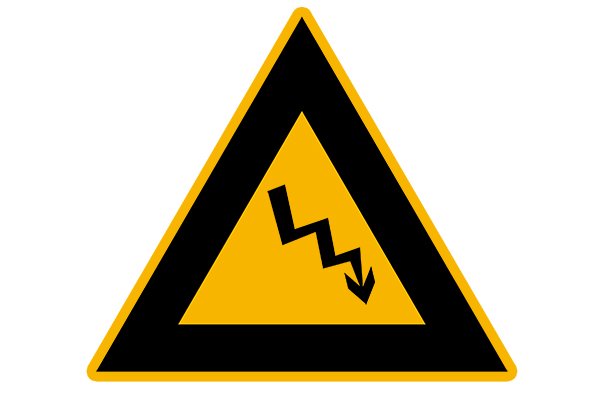 |
Batteries are rated according to voltage and capacity. Voltage (V) represents the power of the battery, which normally comprises 18V or 36V for blowers.
The capacity, measured in amp hours (Ah), indicates the running time. You’ll need at least 1.5Ah for a leaf blower, and 2.0Ah for a blower vacuum. |
|||
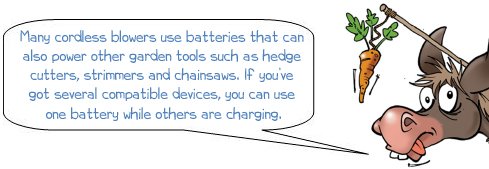 |
||||
Petrol |
||||
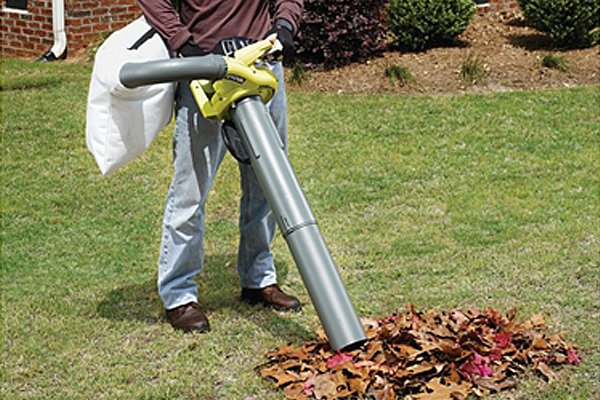 |
Petrol-driven blowers are better for the larger garden as they have plenty of solid power, along with the freedom to roam as far as you like without the inconvenience of a cable.
They are noisier and a little heavier than electric corded models because you’re also carrying the weight of the petrol, but provide a much longer running time than battery-powered blowers. |
|||
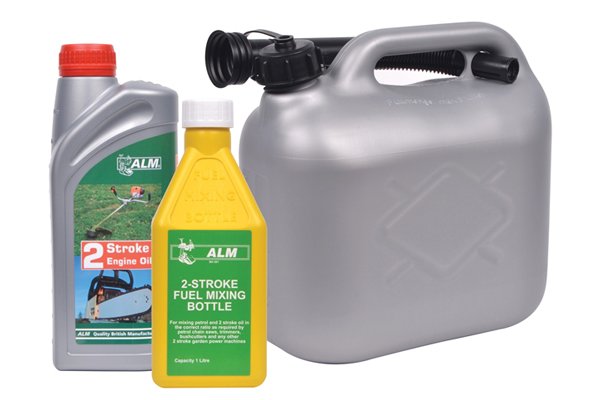 |
Most of these blowers have two-cylinder (two-stroke) engines. These offer punchy performance and a good balance between power and weight.
They run on two-stroke fuel, a blend of petrol and oil that you mix yourself. The ratio of petrol to oil varies, but is usually either 40:1 or 50:1 – just follow the manufacturer’s guidelines. The most accurate way is to use a mixing bottle, which you can get from a DIY store or garage. |
|||
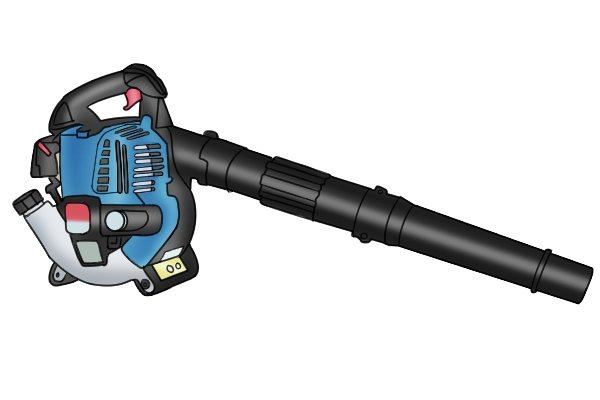 |
Four-stroke blowers are becoming more widely available now. They use ordinary unleaded petrol, which reduces exhaust fumes and also means you don’t have to mix fuel.
However, they require regular oil changes and tend to be larger and heavier than two-stroke machines. |
|||
 |
A common complaint among gardeners is that petrol-driven blowers, particularly pull-cord models, can be difficult to start. Look for machines which make it easier by including a simplified choke operation or electric start-up assistance. | |||
Other features to consider |
||||
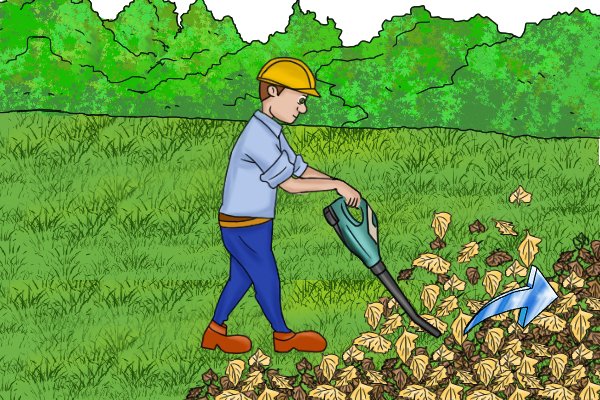 |
SpeedA blower’s speed, or air power, is measured in kilometres per hour (km/h). This can vary from 200 to more than 400km/h – the more powerful the blower, the higher the speed at which air is propelled from the nozzle. A model with variable speed lets you carry out a wider range of tasks than a fixed speed version. |
|||
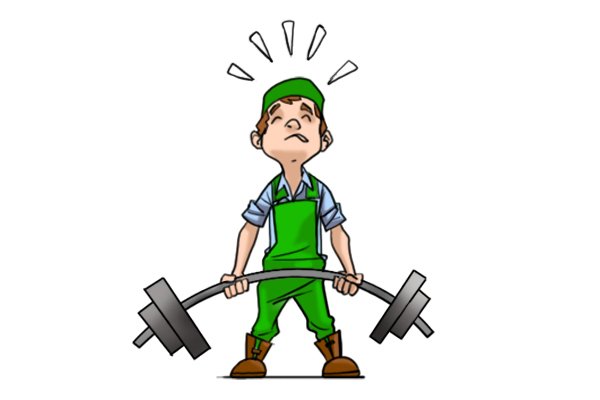 |
WeightHand-held blowers can feel surprisingly heavy after only a short while, especially if you’re using them in vacuum mode to collect leaves. They range in weight from around 1.8kg (4lb approx) for the lightest leaf blowers, up to about 6.8kg (15lb approx) for the biggest blower vacuums, so allow for this when making your choice. |
|||
 |
NoiseThe noise level of leaf blowers and vacuums is measured in decibels (dB). More than 85dB is considered harmful and requires the user to wear ear protection. However, many blowers emit more than 100dB, which is not only bad for your hearing but also annoying for neighbours. Cordless blowers are the quietest, at around 65dB. |
|||
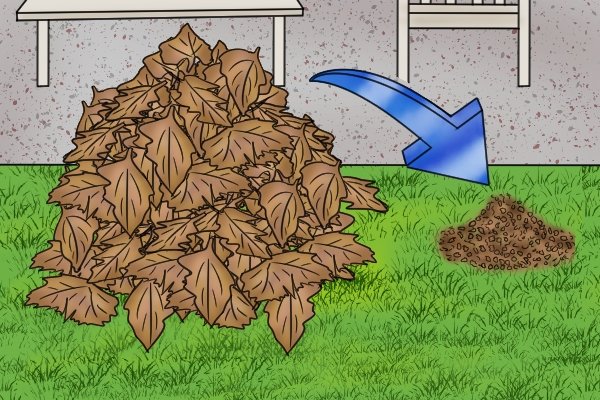 |
Mulch ratioThe mulch ratio, also known as debris reduction ratio, measures how finely the leaves are shredded inside the vacuum bag. The majority of blower vacuums have a ratio of 10:1, which means they are able to reduce the equivalent of ten bags of leaves to just one bag. Mulch ratios can vary widely between machines, from just 7:1 up to around 16:1. |
|||
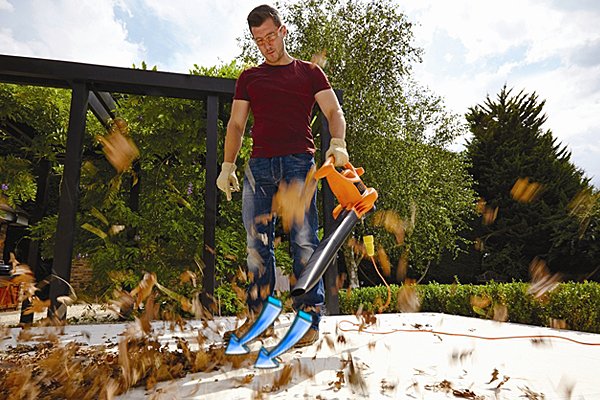 |
Air and vacuum volumeThe air volume figure shows how much air the blower can move (as opposed to how fast). For instance, if a blower is able to move twelve cubic metres of air per minute, its volume is described as 12m³/min. The higher the volume, the more debris a blower can shift. Vacuum volume describes the amount of material that the machine can suck up. Air and vacuum volume on hand-held blowers can range from just over 3m³/min to around 14m³/min. |
|||
 |
Collection bag designTry and get a blower with a sturdy collection bag that’s easy to attach to the blower, and is also accessible when you need to empty it. A bag with a zip extending around two sides is much quicker and simpler to empty than one that only has an opening at the top. And a wide shoulder strap will also make it more comfortable to carry around. |
|||
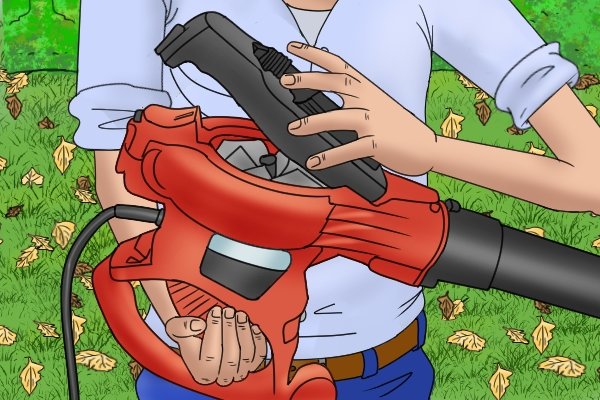 |
Fan designThe area housing the fan, or impeller, should be easy to reach for clearing any blockages. Metal fans tend to last longer than plastic ones, although they are more likely to rust. |
|||
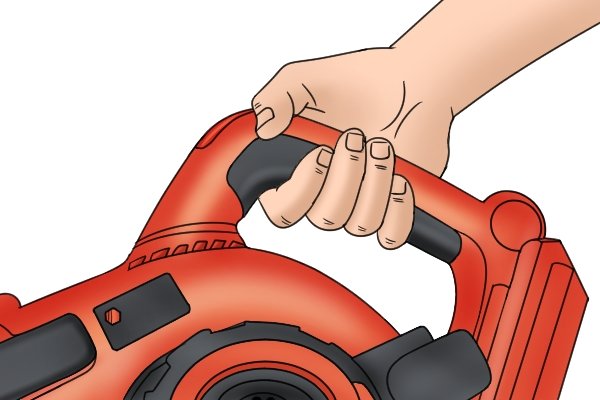 |
Handle and trigger comfortRounded, comfortable handles with cushion grips will make your job much more pleasant, particularly if there is also a trigger lock – it can become very tiring if you have to hold down the trigger the whole time. |
|||
 |
Switching modeCheck how easy or otherwise it is to convert the machine from blower to vacuum mode – preferably without having to use tools. Some models require you to swap the nozzle and attach the collection bag when converting from blower to vacuum, while others have all the features built in and just need you to turn a switch or lever. |
|||
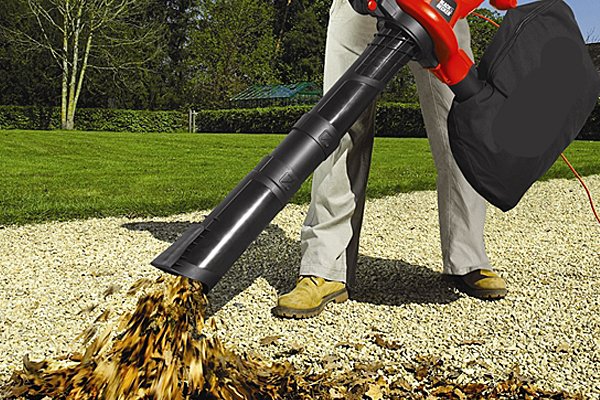 |
Tube diameterA blower vacuum with a large diameter tube and wide nozzle will be less likely to clog up with leaves and easier to unblock than a narrow one, so this is worth bearing in mind when reaching your decision. |
|||






